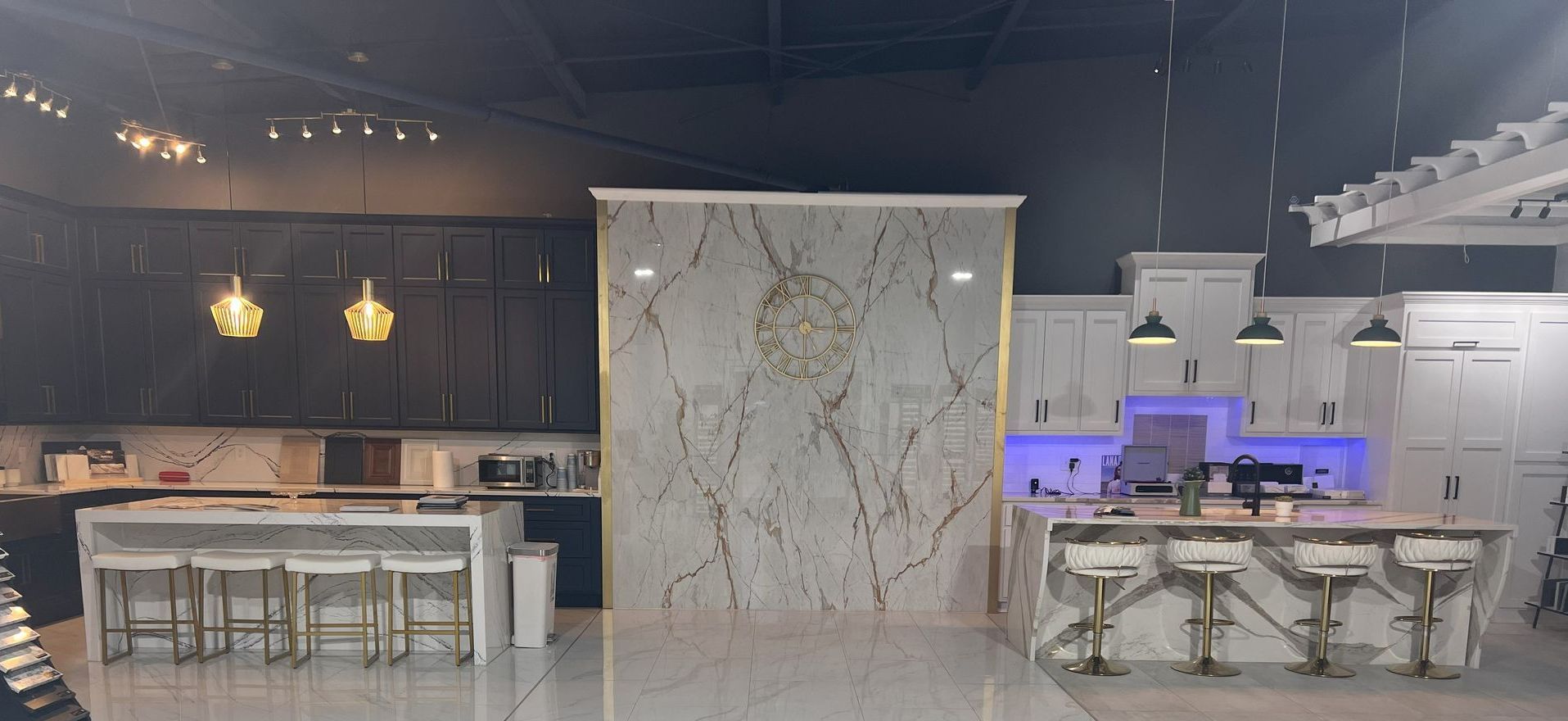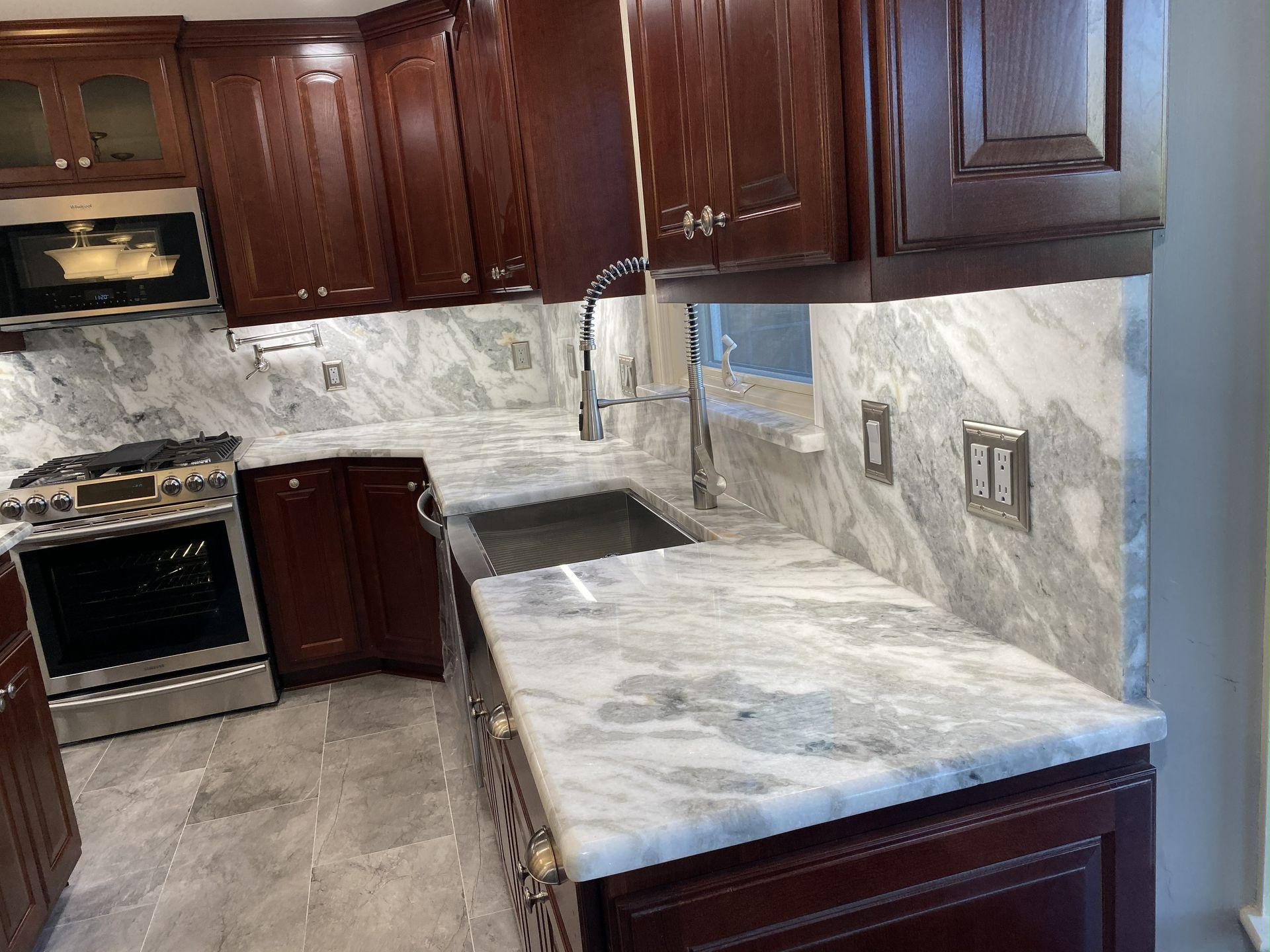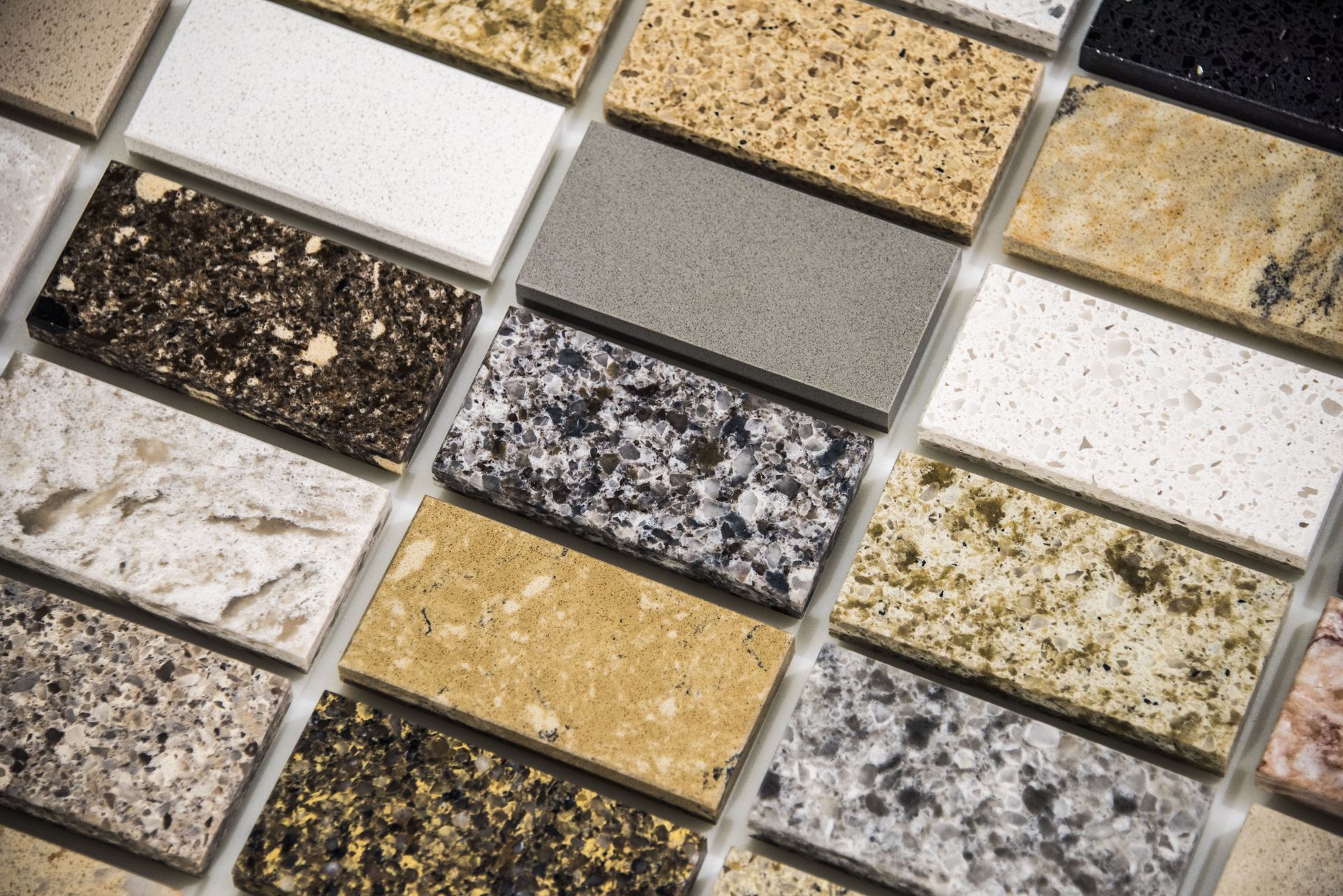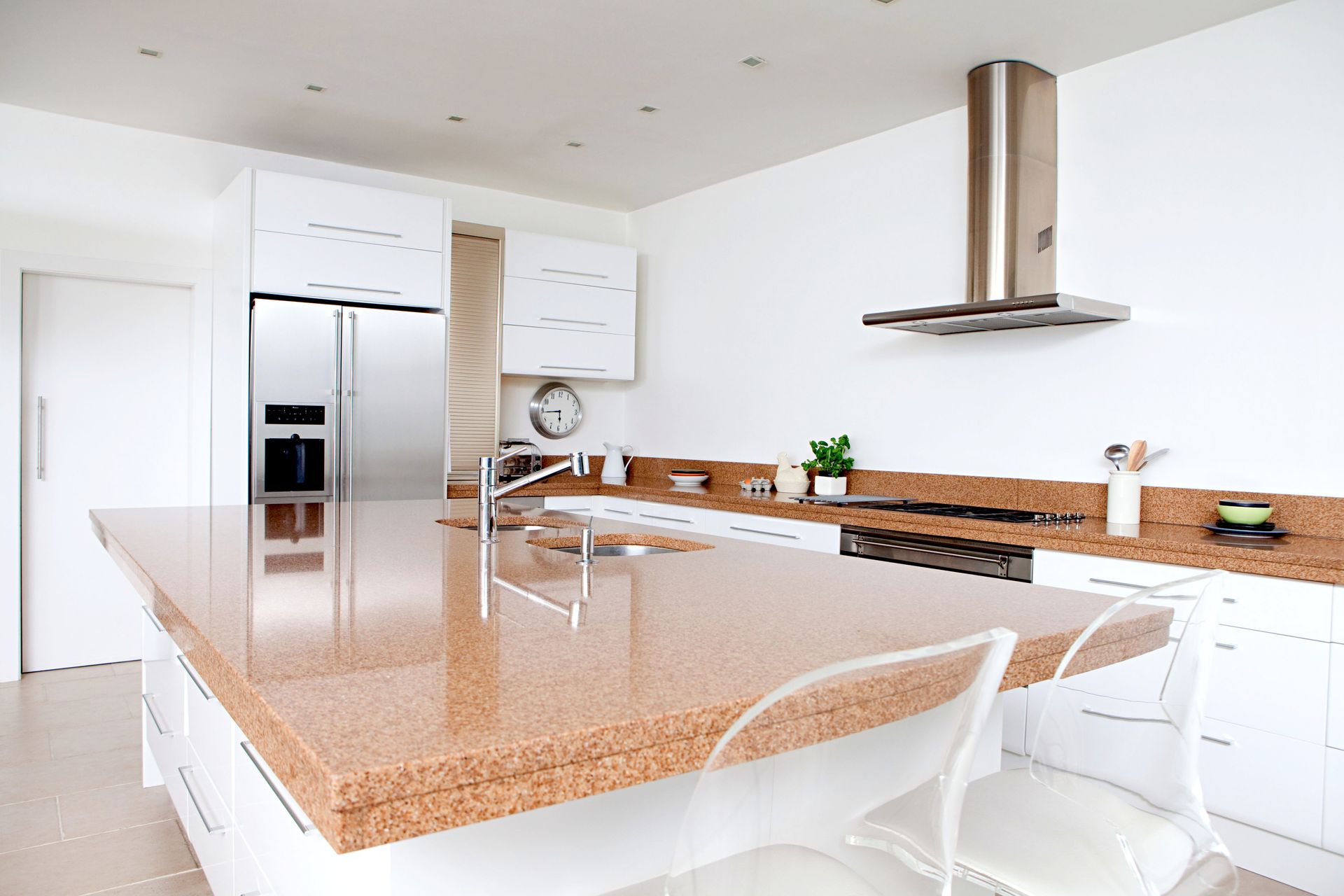Porcelain in Design: More Than Just Countertops
Exploring the Versatility, Beauty, and Benefits of Porcelain in Modern Home Design

When you hear the word porcelain, you might think of fine china or delicate figurines—but in the world of interior design, porcelain has stepped into the spotlight in a big, bold way. Durable, versatile, and incredibly stylish, porcelain is becoming a go-to material not just for countertops, but for full walls, flooring, and even statement design pieces.
If you've been to our Norfolk showroom, you've likely seen the giant porcelain clock that greets you as you walk in. It’s not just a conversation starter—it’s a real-life example of how porcelain can be used creatively and effectively in modern spaces.
What Is Porcelain?
Porcelain is a man-made ceramic material fired at extremely high temperatures. This process results in a slab that is:
- Dense and non-porous
- Heat and UV resistant
- Scratch-resistant
- Available in large-format sizes
In the design world, porcelain slabs often mimic the look of natural stone, wood, or concrete, but without the maintenance or limitations of those materials.
Porcelain in the Kitchen
Porcelain has recently emerged as a popular choice for kitchen countertops, and with good reason.
Why Homeowners Love It :
- Heat resistance: You can place hot pots and pans directly on it—no worries.
- Scratch and stain resistance: Great for busy kitchens with heavy use.
- Low maintenance: No sealing required. Simply wipe with mild soap and water.
- Design flexibility: Porcelain slabs can be printed to replicate marble, concrete, wood grain, and more—so you get the look without the upkeep.
Applications in the Kitchen :
- Countertops
- Backsplashes
- Waterfall edges
- Custom sinks and integrated drainboards
- Wall cladding behind open shelving or ranges
Beyond the Kitchen: Porcelain as a Design Statement
One of the best things about porcelain? Its versatility. The large-format slabs available today allow for seamless design in areas far beyond the kitchen.
Design Ideas :
- Shower walls and bathroom cladding
- Fireplace surrounds
- Furniture surfaces (like coffee or dining tables)
- Entryway or mudroom walls
- Outdoor kitchens and BBQ areas (thanks to its UV resistance)
And of course—statement decor pieces, like the porcelain clock in our Norfolk showroom. This piece shows how porcelain can be both functional and artistic, turning a practical material into a show-stopping focal point.
Pros and Cons of Porcelain
Pros :
- Extremely durable
- Lightweight compared to natural stone
- Non-porous (no sealing required)
- UV stable—perfect for indoor or outdoor use
- Wide variety of patterns and colors
- Low maintenance and hygienic
Cons :
- Can be more brittle during fabrication and installation—requires experienced fabricators
- Edges can chip if mishandled
- Limited edge profile options compared to materials like quartz or granite
Is Porcelain Right for You?
If you’re looking for a modern, low-maintenance surface that offers style and strength, porcelain is absolutely worth considering. Whether you want the elegant look of marble without the upkeep, or a seamless wall surface that resists wear and tear, porcelain delivers both beauty and function.
Want to see porcelain in action? Come visit our Norfolk showroom to see our giant porcelain clock—a true testament to the design potential of this incredible material.






Share On: